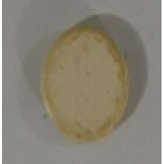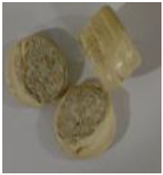Sulfonation Treatment of Polyether-Ether-Ketone for Dental Implant Uses
Abstract
:1. Introduction
2. Materials and Method
2.1. Preparing the Samples
2.2. PEEK Sulfonation
2.3. Surface Characterization
2.4. Statistical Analysis
3. Results
3.1. Washing and Removal Methods of the Acid Residues
3.2. Chemical Characterization and Surface Morphology of the Sulfonated PEEKs with Various Sulfonation Times
3.3. Sulfonated PEEKs’ Hydrophilic Properties with Various Sulfonation Times
4. Discussion
5. Conclusions
Author Contributions
Funding
Institutional Review Board Statement
Informed Consent Statement
Data Availability Statement
Conflicts of Interest
References
- Basgul, C.; Yu, T.; MacDonald, D.W.; Siskey, R.; Marcolongo, M.; Kurtz, S.M. Structure–property relationships for 3D-printed PEEK intervertebral lumbar cages produced using fused filament fabrication. J. Mater. Res. 2018, 33, 2040–2051. [Google Scholar] [CrossRef] [PubMed]
- Singh, S.; Prakash, C.; Ramakrishna, S. 3D printing of polyether-ether-ketone for biomedical applications. Eur. Polym. J. 2019, 114, 234–248. [Google Scholar] [CrossRef]
- Kadhum, A.S.; Alhuwaizi, A.F. The effect of composite bonding spot size and location on the performance of poly-ether-ether-ketone (PEEK) retainer wires. J. Baghdad Coll. Dent. 2021, 33, 1–9. [Google Scholar] [CrossRef]
- Ma, H.; Suonan, A.; Zhou, J.; Yuan, Q.; Liu, L.; Zhao, X.; Zhang, Y.G. PEEK (Polyether-ether-ketone) and its composite materials in orthopedic implantation. Arab. J. Chem. 2021, 14, 102977. [Google Scholar] [CrossRef]
- Ali, A.M.; Thair, L.; Intisar, J. Studying Biomimetic Coated Niobium as an Alternative Dental Implant Material to Titanium (in vitro and in vivo study). Baghdad Sci. J. 2018, 15, 0253. [Google Scholar]
- Zohdy, K.M.; El-Sherif, R.M.; El-Shamy, A.M. Effect of pH fluctuations on the biodegradability of nanocomposite Mg-alloy in simulated bodily fluids. Chem. Pap. 2023, 77, 1317–1337. [Google Scholar] [CrossRef]
- Tsakiris, V.; Tardei, C.; Clicinschi, F.M. Biodegradable Mg alloys for orthopedic implants—A review. J. Magnes. Alloys 2021, 9, 1884–1905. [Google Scholar] [CrossRef]
- Germaini, M.M.; Belhabib, S.; Guessasma, S.; Deterre, R.; Corre, P.; Weiss, P. Additive manufacturing of biomaterials for bone tissue engineering–A critical review of the state of the art and new concepts. Prog. Mater. Sci. 2022, 130, 100963. [Google Scholar] [CrossRef]
- Sharma, S.; Bhasin, A.; Mantri, S.; Khatri, M. Polyether-Ether-Ketone (PEEK) and its application in prosthodontics: A review. South Asian Res. J. Oral. Dent. Sci. 2021, 3, 60–64. [Google Scholar]
- Pidhatika, B.; Widyaya, V.T.; Nalam, P.C.; Swasono, Y.A.; Ardhani, R. Surface Modifications of High-Performance Polymer Polyetheretherketone (PEEK) to Improve Its Biological Performance in Dentistry. Polymers 2022, 14, 5526. [Google Scholar] [CrossRef]
- Simari, C.; Enotiadis, A.; Nicotera, I. Transport properties and mechanical features of sulfonated polyether ether ketone/organosilica layered materials nanocomposite membranes for fuel cell applications. Membranes 2020, 10, 87. [Google Scholar] [CrossRef]
- Ghareeb, R.I.; Al-Tamemi, E.I. The role of topical application of bone morphogenetic protein 7 (BMP7) on bone healing on rabbits (Immunohistochemical study on TGF-β 3 & IGF-1R). J. Baghdad Coll. Dent. 2015, 27, 70–78. [Google Scholar]
- Wang, B.; Huang, M.; Dang, P.; Xie, J.; Zhang, X.; Yan, X. PEEK in fixed dental prostheses: Application and adhesion improvement. Polymers 2022, 14, 2323. [Google Scholar] [CrossRef] [PubMed]
- Adem, N.; Bal, B.; Kazazoğlu, E. Comparative Study of Chemical and Mechanical Surface Treatment Effects on The Shear Bond Strength of Polyether-Ether-Ketone to Veneering Resin. Int. J. Prosthodont. 2022, 35, 201–207. [Google Scholar] [CrossRef] [PubMed]
- Soares Machado, P.; Cadore Rodrigues, A.C.; Chaves, E.T.; Susin, A.H.; Valandro, L.F.; Pereira, G.K.R.; Rippe, M.P. Surface Treatments and Adhesives Used to Increase the Bond Strength Between Polyetheretherketone and Resin-based Dental Materials: A Scoping Review. J. Adhes. Dent. 2022, 24, 233–245. [Google Scholar] [PubMed]
- Tukmachi, M.S.; Abdul-Baqi, H.J.; Hussein, F.H. Biofunctionalization of polyetheretherketone implant material by bone-forming peptide-2 immobilization. Karbala Int. J. Mod. Sci. 2023, 9, 9. [Google Scholar] [CrossRef]
- Safi, I.N.; Hussein, B.M.A.; Aljudy, H.J.; Tukmachi, M.S. Effects of Long Durations of RF–Magnetron Sputtering Deposition of Hydroxyapatite on Titanium Dental Implants. Eur. J. Dent. 2021, 15, 440–447. [Google Scholar] [CrossRef] [PubMed]
- Saleh, N.A.; Nordin, R.; Ahmad, A.A.; Fazial, F.F. Physicochemical characterization of starch from mango seed kernel extracted using different methods. In AIP Conference Proceedings; AIP Publishing: College Park, MD, USA, 2023; Volume 2703. [Google Scholar]
- Jeeranun, P.; Chalongkuakul, N.; Arksornnukit, M.; Silthampitag, P.; Chaijareenont, P. Sulfonated PEEK Characteristic after Various Surface Cleaning Techniques. J. Int. Dent. Med. Res. 2022, 15, 131–139. [Google Scholar]
- Wang, W.; Luo, C.J.; Huang, J.; Edirisinghe, M. PEEK surface modification by fast ambient-temperature sulfonation for bone implant applications. J. R. Soc. Interface 2019, 16, 20180955. [Google Scholar] [CrossRef]
- Dos Santos, F.S.F.; Vieira, M.; da Silva, H.N.; Tomás, H.; Fook, M.V.L. Surface bioactivation of polyether ether ketone (PEEK) by sulfuric acid and piranha solution: Influence of the modification route in capacity for inducing cell growth. Biomolecules 2021, 11, 1260. [Google Scholar] [CrossRef]
- Cheng, Q.; Yuan, B.; Chen, X.; Yang, X.; Lin, H.; Zhu, X.; Zhang, X. Regulation of surface micro/nano structure and composition of polyetheretherketone and their influence on the behavior of MC3T3-E1 pre-osteoblasts. J. Mater. Chem. B 2019, 7, 5713–5724. [Google Scholar] [CrossRef]
- Zheng, Y.; Liu, L.; Ma, Y.; Xiao, L.; Liu, Y. Enhanced osteoblasts responses to surface-sulfonated polyetheretherketone via a single-step ultraviolet-initiated graft polymerization. Ind. Eng. Chem. Res. 2018, 57, 10403–10410. [Google Scholar] [CrossRef]
- Kumar, U.K.; Murgod, S. Strategies and modification of polyetheretherketone for prosthodontic driven implants. Int. J. Oral Health Sci. 2020, 10, 68–73. [Google Scholar]
- Wang, R.; Xiong, Y.; Yang, K.; Zhang, T.; Zhang, F.; Xiong, B.; Tang, J. Advanced progress on the significant influences of multi-dimensional nanofillers on the tribological performance of coatings. RSC Adv. 2023, 13, 19981–20022. [Google Scholar] [CrossRef]
- Fan, H.; Guo, Z. Bioinspired surfaces with wettability: Biomolecule adhesion behaviors. Biomater. Sci. 2020, 8, 1502–1535. [Google Scholar] [CrossRef]
- Zhang, B.; Su, Y.; Zhou, J.; Zheng, Y.; Zhu, D. Toward a better regeneration through implant-mediated immunomodulation: Harnessing the immune responses. Adv. Sci. 2021, 8, 2100446. [Google Scholar] [CrossRef]
- Knaus, J.; Schaffarczyk, D.; Cölfen, H. On the future design of bio-inspired polyetheretherketone dental implants. Macromol. Biosci. 2020, 20, 1900239. [Google Scholar] [CrossRef]
- Torstrick, F.B.; Lin, A.S.; Safranski, D.L.; Potter, D.; Sulchek, T.; Lee, C.S.; Guldberg, R.E. Effects of surface topography and chemistry on polyether-ether-ketone (PEEK) and titanium osseointegration. Spine 2020, 45, E417–E424. [Google Scholar] [CrossRef]







| Samples | Immersion Solution | Sulfonation Time/s | Observation | SEM Test |
|---|---|---|---|---|
| A |  | As the control, with a flat and smooth surface (Image 1A) | ||
| B, C, D, E | Concentrated H2SO4 | 5, 10, 30, 60, and 120 s |  | The porous structure gradually became more obvious (Image 1B–E) |
| F | Concentrated H2SO4 | More than 120 s |  | Melting and damage of the whole sample. These sample were neglected |
| Sample | Etching Times | Angles Obtained |
|---|---|---|
| PEEK (control) | 90 | |
| Sulphonated PEEK (5 s) | 5 s | 90.00 |
| Sulphonated PEEK (10 s) | 10 s | 90.00 |
| Sulphonated PEEK (30 s) | 30 s | 87.22 |
| Sulphonated PEEK (60 s) | 60 s | 81.467 |
| Sulphonated PEEK (120 s) | 120 s | 75.21 |
Disclaimer/Publisher’s Note: The statements, opinions and data contained in all publications are solely those of the individual author(s) and contributor(s) and not of MDPI and/or the editor(s). MDPI and/or the editor(s) disclaim responsibility for any injury to people or property resulting from any ideas, methods, instructions or products referred to in the content. |
© 2024 by the authors. Licensee MDPI, Basel, Switzerland. This article is an open access article distributed under the terms and conditions of the Creative Commons Attribution (CC BY) license (https://creativecommons.org/licenses/by/4.0/).
Share and Cite
Hamid, H.; Safi, I.; Hussein, F. Sulfonation Treatment of Polyether-Ether-Ketone for Dental Implant Uses. Appl. Sci. 2024, 14, 3980. https://doi.org/10.3390/app14103980
Hamid H, Safi I, Hussein F. Sulfonation Treatment of Polyether-Ether-Ketone for Dental Implant Uses. Applied Sciences. 2024; 14(10):3980. https://doi.org/10.3390/app14103980
Chicago/Turabian StyleHamid, Hussein, Ihab Safi, and Falah Hussein. 2024. "Sulfonation Treatment of Polyether-Ether-Ketone for Dental Implant Uses" Applied Sciences 14, no. 10: 3980. https://doi.org/10.3390/app14103980





